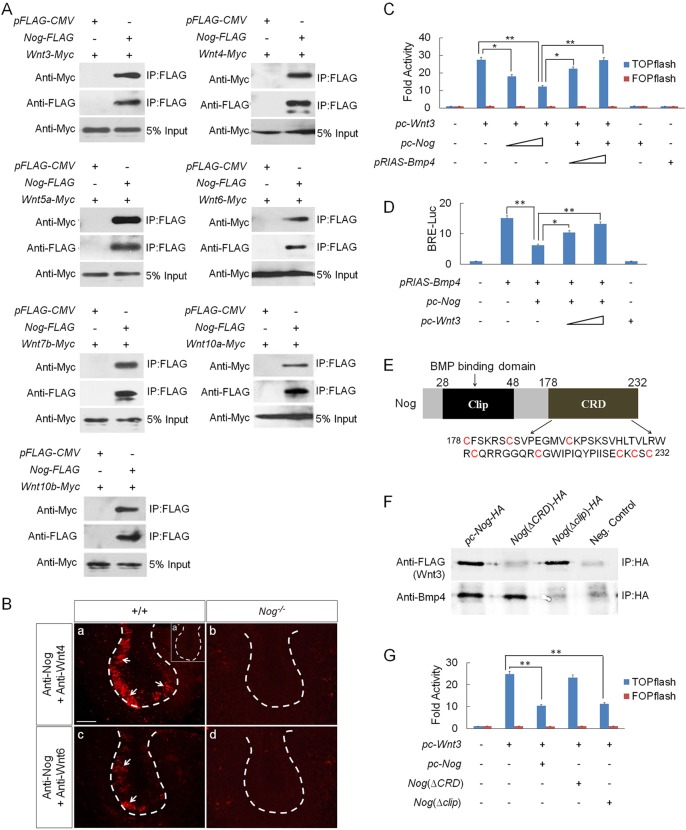Fig. 5.
Physical interaction between Nog and Wnts leads to inhibition of Wnt canonical signaling. (A) Co-IP assays show physical interaction between Nog and Wnt3, 4, 5a, 6, 7b, 10a and 10b. (B) In situ PLA shows the bindings of endogenous Nog with Wnt4 (a) and Wnt6 (c) in the dental epithelium of E13.5 wild-type tooth germs, but a lack of signals in Nog−/− tooth germs (b,d). Insert in (a) is a negative control of PLA. White arrows indicate PLA signals. Scale bar: 50 µm. (C) TOPflash reporter assay demonstrates antagonistic effect of Nog on Wnt signaling. TOPflash or FOPflash (0.2 µg), pRL-SV40 (0.02 µg), pc-Wnt3 (0.005 µg) vectors with ascending concentrations of pc-Nog (0.1-0.4 µg) and pRIAS-Bmp4 (0.05-0.1 µg) vectors were co-transfected into HEK 293T and TOPflash activity was measured. (D) BRE-luciferase reporter assay shows attenuation of Nog inhibition on BMP signaling by Wnt3. pGL3-BRE-Luc (0.002 µg), pRL-SV40 (0.02 µg), pTRIS-Bmp4 (0.2 µg) and pc-Nog (0.01 µg) vectors with ascending concentrations of pc-Wnt3 (0.1-0.5 µg) were co-transfected into HEK 293T and luciferase activity was measured. (E) Schematic representation of Nog protein shows the clip domain and CRD domain. The amino acid sequence of CRD is also shown, with cysteine residues highlighted in red. (F) Co-IP assays show physical interactions between truncated Nog and Wnt3 or Bmp4. (G) TOPflash assay shows the effect of truncated Nog on Wnt3 induction of TOPflash activity. TOPflash or FOPflash, pRL-SV40, pc-Wnt3 vectors with pc-Nog, Nog(ΔCRD) or Nog(Δclip) (0.2 µg) were co-transfected into HEK 293T and TOPflash activity was measured. *P<0.05, **P<0.01; n=6.

